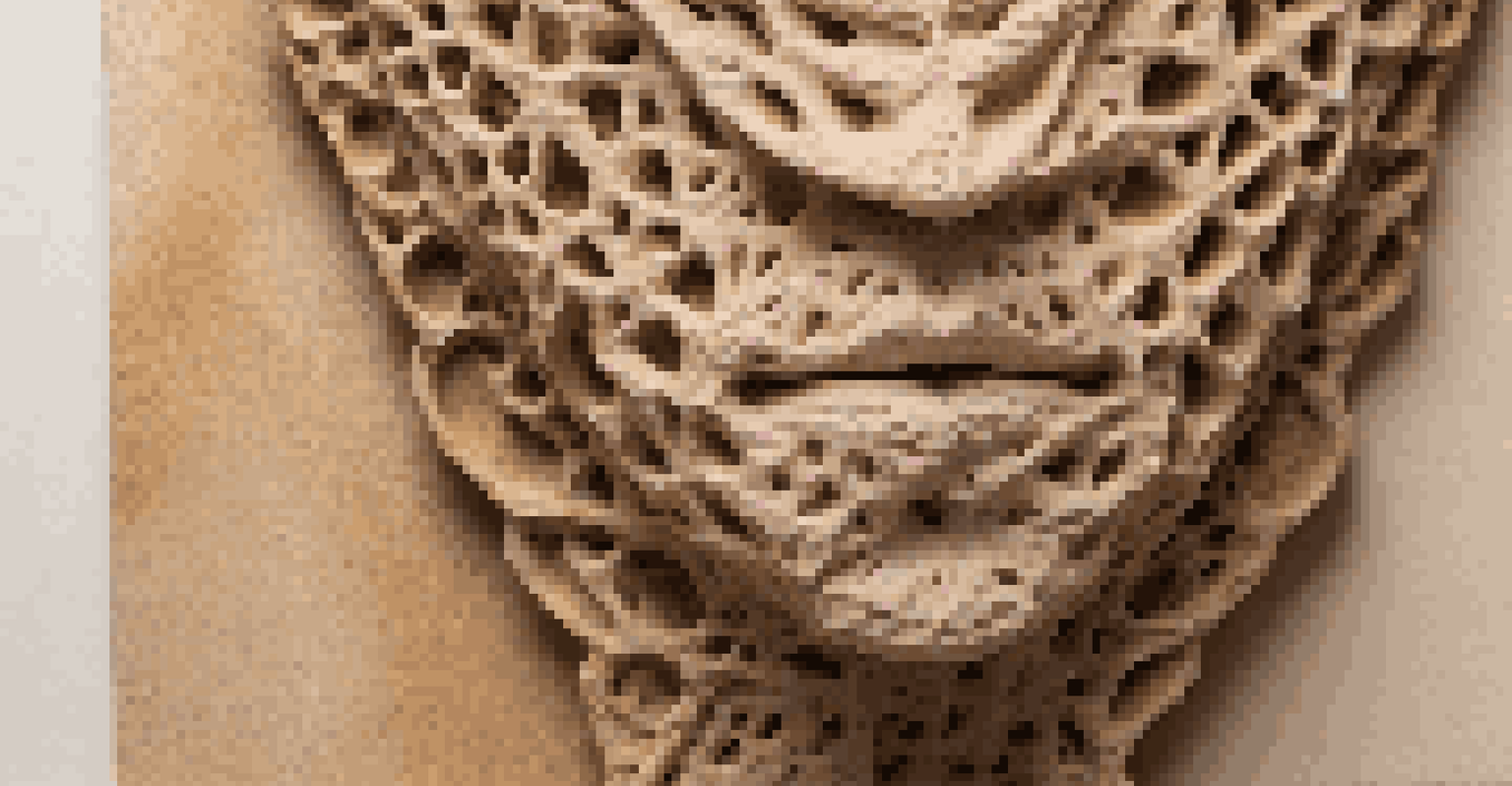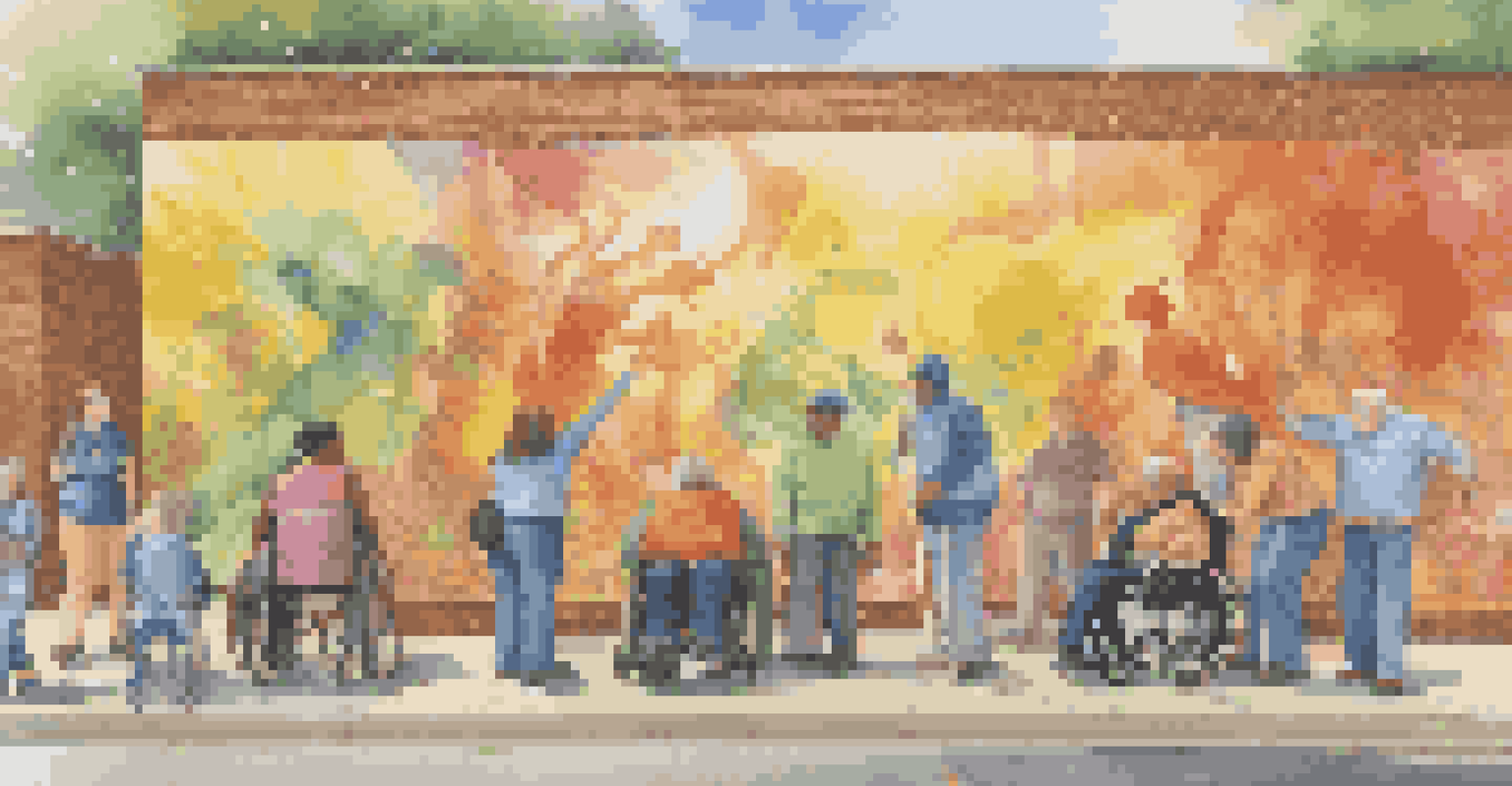Art and Memory: Representations of Disability in Remembrance

Understanding Art's Role in Shaping Memory
Art serves as a powerful medium for expressing personal and collective memories. Through various forms, it captures emotions and experiences that words often fail to convey. This connection between art and memory allows us to revisit moments that have shaped our identities and histories.
Art is not what you see, but what you make others see.
When we examine the interplay between art and memory, we recognize how artists use their work to reflect on significant life events. These reflections can be particularly poignant when they address themes like disability, as they bring to light the unique challenges and triumphs faced by individuals.
Ultimately, art not only preserves memories but also invites viewers to engage with them. This engagement fosters empathy and understanding, bridging gaps between different experiences and highlighting the importance of representation in our shared narratives.
The Historical Context of Disability in Art
Throughout history, representations of disability in art have evolved dramatically. In earlier periods, disabled individuals were often depicted as tragic figures or marginalized in society, which reflected prevailing attitudes of the time. These portrayals often lacked depth and reinforced stereotypes rather than offering authentic insights.

As societal perceptions shifted, artists began to challenge these stereotypes, using their platforms to present more nuanced and diverse representations of disability. Movements in the 20th century, such as disability rights activism, prompted artists to create works that celebrate resilience and individuality.
Art Captures Personal Memories
Art serves as a powerful medium for expressing and preserving personal and collective memories, allowing us to engage with our histories.
This historical context is crucial for understanding how contemporary artists continue to navigate these themes. By acknowledging the past, we can appreciate how far we’ve come while recognizing the ongoing need for authentic representation in art.
Artistic Techniques to Convey Disability Experiences
Artists employ various techniques to convey the complexities of living with a disability. From vivid imagery and symbolism to mixed media, each approach serves to highlight different aspects of the disabled experience. For instance, the use of color can evoke emotions, while texture may represent the struggles faced in daily life.
Disability is not an inability; it is a different ability.
Moreover, storytelling through art allows artists to share personal narratives that resonate with audiences. This narrative-driven approach humanizes the experience of disability, inviting viewers to connect on a deeper level. It transforms abstract concepts into relatable stories that evoke empathy and understanding.
In this way, artistic techniques not only enhance the visual appeal of a work but also enrich its emotional resonance. By experimenting with various mediums, artists can create powerful representations that challenge perceptions and spark conversations about disability.
Case Studies: Notable Artists Representing Disability
Several contemporary artists have made significant contributions to the representation of disability in art. For example, Judith Scott, a deaf artist with Down syndrome, created intricate sculptures that speak to her experiences of isolation and connection. Her work challenges viewers to reconsider their perceptions of disability and creativity.
Similarly, photographer Alice Wong captures the realities of disabled life through her lens, showcasing the beauty and complexity of everyday moments. Wong’s work amplifies disabled voices, emphasizing the importance of self-representation and advocacy in the arts.
Challenging Disability Stereotypes
Contemporary artists are reshaping perceptions of disability through diverse and nuanced representations that celebrate resilience and individuality.
These artists exemplify how personal narratives can resonate on a broader scale, fostering dialogue and understanding. By examining their work, we gain insights into the diverse experiences of disability, which contributes to a richer cultural tapestry.
The Impact of Art on Disability Awareness
Art has the power to challenge societal norms and raise awareness about disability. By showcasing the lived experiences of disabled individuals, artists can confront stereotypes and promote a more inclusive understanding of diversity. This awareness is vital in fostering empathy and breaking down barriers in society.
Moreover, exhibitions and public art projects focused on disability can create spaces for dialogue and reflection. They encourage audiences to engage with these themes, prompting discussions that may not occur in everyday life. Such engagement is crucial for dismantling misconceptions and fostering a more accepting society.
Ultimately, the impact of art extends beyond individual pieces; it shapes cultural narratives and influences public perception. Through its ability to evoke emotion and provoke thought, art can serve as a catalyst for change, inspiring action and advocacy for disability rights.
Memory and Commemoration in Disability Art
Memory plays a critical role in art that addresses disability, particularly in commemorative works. Artists often use their creations to honor individuals or communities, ensuring that their stories are not forgotten. This act of commemoration reinforces the significance of lived experiences and the legacies left behind.
In many cases, these artworks serve as memorials that invite viewers to reflect on the past while considering the future. They create a space for collective remembrance, allowing communities to grieve, celebrate, and learn from their histories. This process fosters a sense of belonging and shared identity.
Art as a Catalyst for Change
By raising awareness and fostering dialogue around disability, art can challenge societal norms and inspire advocacy for inclusivity.
Additionally, these commemorative pieces can challenge dominant narratives, pushing back against erasure and marginalization. By memorializing disability experiences, artists advocate for recognition and respect, ensuring that these stories continue to resonate in the cultural consciousness.
The Future of Art and Disability Representation
As we look to the future, the representation of disability in art continues to evolve, reflecting societal changes and advancements in understanding. Emerging artists are increasingly embracing their identities and experiences, creating works that are authentic and empowering. This shift signals a promising trend toward greater inclusivity in the art world.
Furthermore, the rise of digital media and technology offers new avenues for representation. Artists can now reach broader audiences and engage in innovative collaborations that amplify disabled voices. This accessibility is crucial for fostering a diverse artistic landscape that reflects the richness of human experience.

The future of art and disability representation holds great potential for transformation. By continuing to uplift and support diverse artistic expressions, we can cultivate a cultural environment that celebrates all narratives, ensuring that disability is not just represented but embraced.